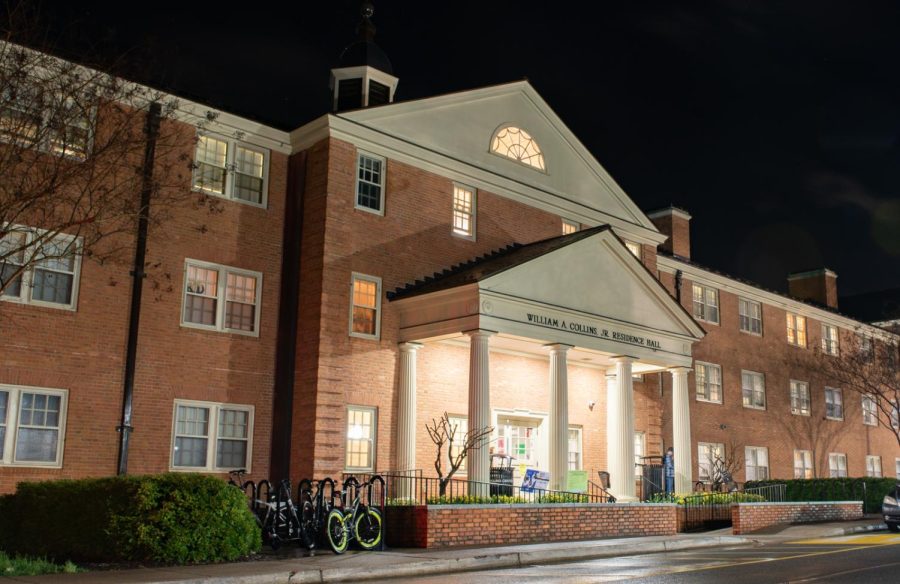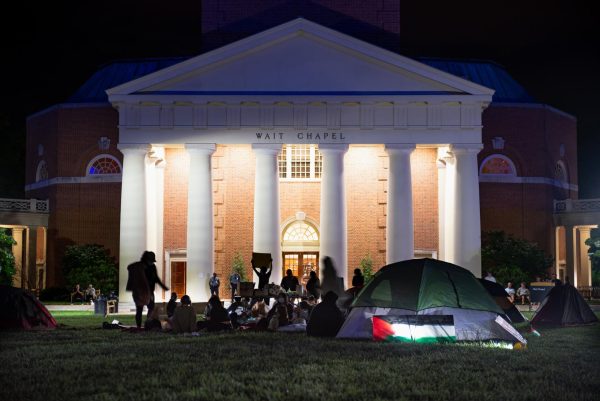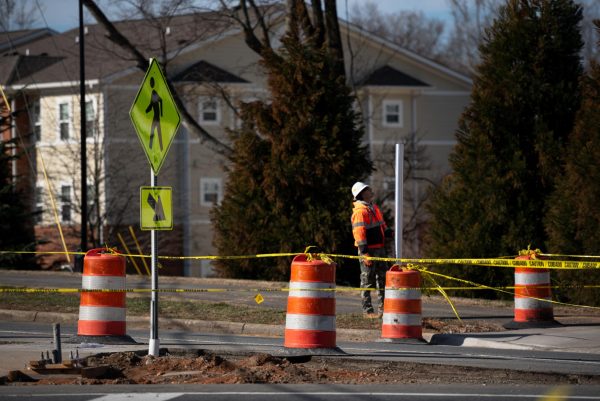On-campus housing costs, explained
Residence Life & Housing details pricing structure amid student concern
Collins Residence Hall is generally less well regarded than some of its freshmen dorm counterparts, like Maya Angelou Hall.
March 2, 2023
Not all residence halls are created equal — just ask a resident of Collins Residence Hall who has a friend in Angelou. And yet — given both students are in a single or double room — those students pay the same rate for on-campus housing.
“The discrepancies in freshman housing are very clear, and I think that it is very unjust that I am paying the same amount as other people,” Gabrielle Becka, a freshman living in Collins Residence Hall, said.
Despite recent renovations in Bostwick, Johnson and Luter Residence Halls, some freshmen feel that there is a drastic difference in quality between residential spaces. Becka, who lives in a double, explains the inconveniences she and her roommate face in their room.
“There isn’t enough space for both my roommate and me,” Becka said. “Whenever one of us has to get to another part of the room, one of us usually has to move out of the way.”
In contrast, freshman Molly Steur describes the spacious room she and her roommate share in Angelou Residence Hall.
“We both have two full-size closets that are honestly bigger than the closet that I have back at home,” Steur said. “We are able to have our own space very easily because there is just so much of it. It’s phenomenal. It’s a very large room, and we definitely have our own corners. We don’t have to encroach on each other’s space at all.”
On-campus housing costs increase across the board every year because of increased expenses — which include utilities, labor costs and finished goods such as furniture and other amenities — some of which are due to inflationary pressures, which have increased in recent years.
“We’re in a whole different world, at least in the past 18 months or so, in terms of inflation,” Dean of Residence Life and Housing (RLH) Matt Clifford said.
For the 2022-2023 academic year, single rooms cost $6,163 per semester, and double rooms cost $5,224 per semester, regardless of the dorm in which you live — other than rooms in Deacon Place, which cost $6,403. Next year, 2023-2024, the rates will increase by around three percent. Clifford explained that prices are determined by RLH and approved by the Board of Trustees.
How much a student will pay per semester also depends on the privacy and utilities available in a student’s primary living space, as well as amenities such as kitchens.
“We really have three room rates,” Clifford said. “Generally speaking, a standard double room is the lowest priced. The notion there is that you’re sharing your primary living space. Then we have another pricing for a single room or an apartment-style space. In terms of that element, we’re looking certainly at the primary living space, which is private. This rate structure also allows [us to offer] variability with some amenities.”
In previous years, RLH followed a more complex model that listed six different housing options. Students were able to choose between a single room, double room (not including Polo Hall), a back double on the quad, a triple room, an apartment single and an apartment double. Alongside following the institutional standard for cost distribution, RLH simplified its rate structure during the 2008-2009 academic year to help students plan ahead financially.
“We had some consultants come through and help us look at our rate structure and simplify it for students with really a couple of goals,” Clifford said. “One is just to help simplify the rate structure, making it easier for students as they’re going through making their decisions and helping students be able to navigate the process much more easily. And probably the primary reason was to make it a lot easier for students to be able to estimate and plan financially for their cost of attendance.”
He continued: “We want our rates to reflect differentiation between housing styles while also ensuring that all housing options are available to the broadest spectrum of our student population.”
Each freshman dorm is randomly assigned to incoming students. In contrast to the current structure, determining housing costs based on the quality of each residence hall may create a financial hardship for some students; for example, a student could be assigned to Angelou but could not afford to pay the higher cost. When asked about the costs of freshman housing, Steur explained how pricing each residence hall based on quality may separate students by economic class if the current model was changed to allow students to choose their residence hall.
I understand that people have issues with [pricing], because obviously Collins is not as nice as Angelou. I do think that it creates a more economically diverse community within the dorms. I think it’s super important for the college experience to not completely segregate the economic classes. That would be ridiculous.
— Molly Steur ('26)
“I think that would [separate students] immediately,” Steur said. “I personally — I can’t speak for other people — I don’t think I would live in Angelou if it cost more than Collins. I think I would simply go for the cheaper option.”
She continued: “I understand that people have issues with [pricing], because obviously Collins is not as nice as Angelou. I do think that it creates a more economically diverse community within the dorms. I think it’s super important for the college experience to not completely segregate the economic classes. That would be ridiculous.”
However, some students disagree with the current pricing structure — they believe a more comprehensive rate structure, despite making housing pricing more complicated, would be fairer than a simplified model. Freshman Ben Daneker, who lives in Babcock Residence Hall, expressed the importance of considering the quality of living spaces when determining housing prices.
“I think it would be better if it was priced by quality, rather than privacy,” Daneker said. “It’s definitely simpler with a more standardized model, but I feel like a greater variation based on the housing is honestly better. An Angelou room versus a Babcock or Collins room is such a big difference. You really shouldn’t be paying the same amount for that great of a disparity.”
An Angelou room versus a Babcock or Collins room is such a big difference. You really shouldn’t be paying the same amount for that great of a disparity.
— Ben Daneker ('26)
When asked about these differences and renovation projects on campus, Clifford explained how RLH and Wake Forest administration prioritize cultivating a residential community when determining future improvements.
“We’re asking questions like: what do we want the community to look like at Wake Forest?” Clifford said. “What is the student when we say things like the student community, their residential community? What does that look like? When we do a renewal project, that would be those things like Collins or Babcock or Polo, or we do a new building, how do we do that work and make sure it is informed by those big questions?”
If students want to voice concerns about their residential experience on campus, there are many resources available to them including Student Government, residential advisors and RLH staff. More information about housing costs can be found on RLH’s website at https://rlh.wfu.edu/.
























